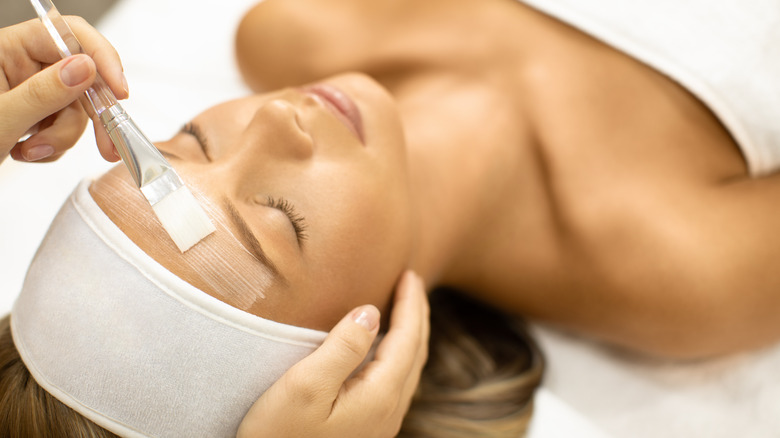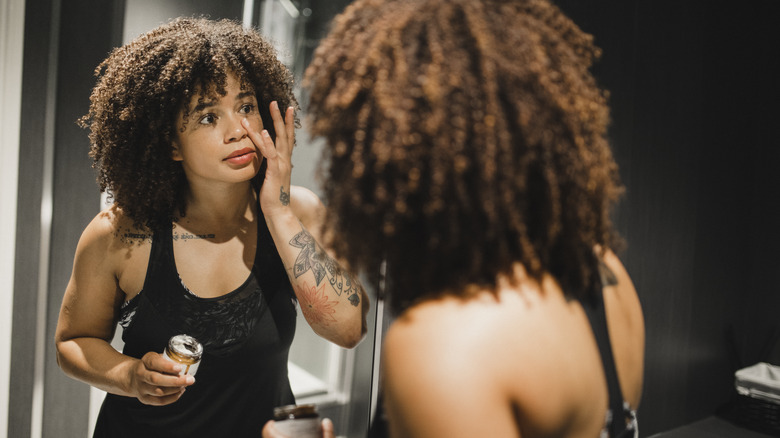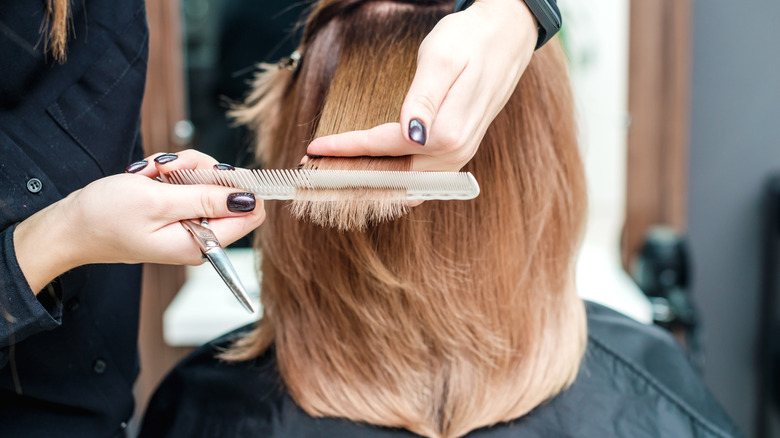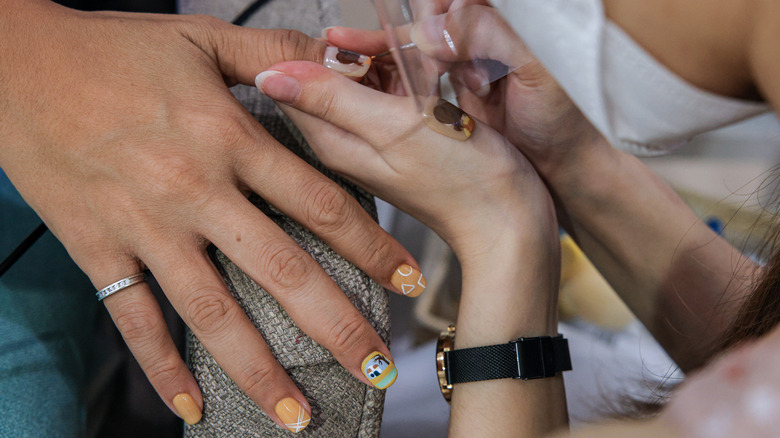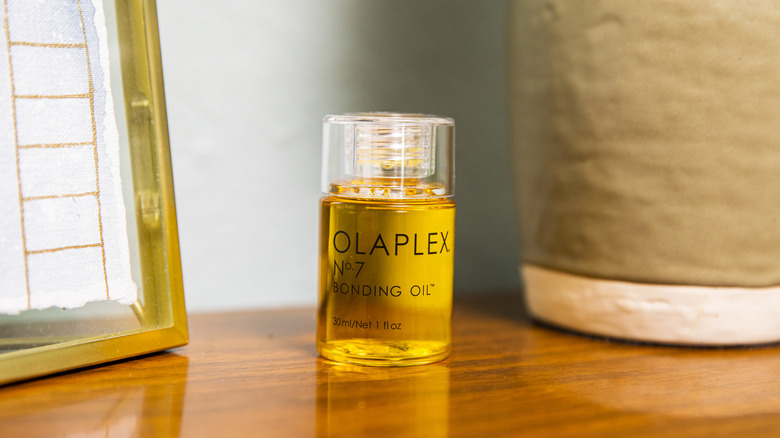Should We Be Cycling Our Hair, Skin, And Nail Routines? Here's The Deal With The Trend
Let's talk about cycles. No, not that cycle — we're talking about how to cycle your skincare routines! When it comes to skincare, nails, and hair, a quick scroll through TikTok will bring up hundreds of videos recommending different advice for achieving the perfect look. Do you need Vitamin C? Should your shampoo have sulfate? And what about gel manicures? How bad are they?
There is a lot of information to parse through. However, what you're putting on your skin, hair, and nails may not be as important as the order in which you apply. We don't just mean the order of the products (although that is important too) — we are talking about cycling your products, a more long-term commitment. Simply put, that means not using the same products every day. Cycling is the cool new beauty trend that claims to transform your hair, skin, and nails in just a few weeks. The idea at the core of product cycling is that you switch up your products regularly to keep your skin, hair, and nails from getting too accustomed to any one ingredient or becoming too reactive to any one product.
If this sounds like repackaged consumerism, you're not necessarily wrong, but experts insist that there is a method to the madness, and product cycling might be the missing piece to your skincare, hair, and nail routines.
Your skin needs variety
The number of steps involved in influencer-approved skincare routines can be overwhelming, including products like exfoliants, double cleansers, toners, serums, and retinoids. Enter skin cycling: A multi-night skincare routine that focuses on rest and rejuvenation to maximize the effects of your products.
A rudimentary skincare routine includes face wash, sunscreen, and moisturizer. Cycling targets the nighttime portion of your routine and should rotate on a four-night basis. Night one is going to focus on exfoliation. "Your other products will perform more effectively because they are able to penetrate more deeply into the skin in a controlled, predictable way," Dr. Whitney Bowe explained when speaking to Everyday Health. Follow up with a heavy-duty moisturizer to nourish your exfoliated skin. Night two is retinoids which help rejuvenate the skin and can prevent wrinkles, acne, and signs of aging. Finally, nights three and four are about rest. Simply wash your face, apply some moisturizer, and call it a night.
For best results, those experimenting with the routine need to stay mindful of how their skin reacts and adjust from there based on their skin's needs, add in some extra recovery nights if your skin becomes inflamed.
Switch it up for shiny hair
The secret to shiny, luscious, and fast-growing locks is using the right products in the right order, aka hair cycling. "The practice really means creating a specific routine to support your hair type," Stefani Kappel, a board-certified dermatologist, told Martha Stewart. "It usually incorporates rest days into an alternating product routine to allow your hair and scalp to get the most benefit from a variety of products."
Start by sussing out products that will work for you. If you regularly tone or relax your hair, avoid anything with sulfate. If you have an oily scalp or suffer from dandruff, play around with integrating a weekly scalp scrub. A simple version of a three-night hair cycling routine might look like washing and conditioning your hair on day one, and on your next wash day using an exfoliating scrub and hair mask, followed by a rest day. Cycling will look different for everyone based on their needs, but when done correctly, should do wonders for your hair.
Choosing products that complement the way you style your hair is going to be of the utmost importance. If you've got the kind of hair where you can wash, air dry, and go, chances are you won't need a highly complex routine. However, if you're someone who regularly blows out their hair or routinely bleaches it, you'll want to focus on nourishing, heavy-weight products that will fight damage and keep your hair as healthy as possible.
Nails need love too
It's easy to overlook nails (they're so tiny!), but they need just as much TLC as your skin and hair — as long as it's the right kind. Painting and trimming your nails too often can actually lead to breakage and thinning. The long-term repercussions of regular manicures are even worse, with some studies suggesting prolonged exposure to UV lights in nail salons can lead to skin cancer. That's where nail cycling comes in. Creating a routine that's built around periods of rest is the best way to ensure your nails (and skin cells!) are strong and healthy.
The first step in nail cycling is assessing the health of your nails. Are they covered in ridges, noticeably thin, or appear off-color? If so, it's time for a detox. Trim your nails (think of it like a big chop for damaged hair) and focus on eating a diet of healthy fats full of vitamin B and biotin. Meanwhile, keep your hands and cuticles moisturized with a simple and reliable lotion.
When you've returned to a healthy baseline you can finally craft a cycling routine. Nail cycling is all about giving your nails and cuticles breaks between manicures and trims. So, if you opt for something more heavy-duty like gel extensions, plan at least a couple of weeks between appointments to let your nails recover. In addition to spacing out your treatments, look for a salon that uses high-quality nontoxic products and sterilized tools.
Is it worth it?
At the end of the day, the success of product cycling comes down to individual needs. Skin cycling, for example, isn't the move for someone with medical conditions. If you're on acne medication or topical prescriptions for rosacea, eczema, or seborrheic dermatitis, cycling could overload your skin. Don't worry about using a regular exfoliant or retinol; just focus on getting your conditions under control and go from there.
As for your hair and nails, cycling is a little more accessible. Outside of medical needs like a prescription shampoo, there aren't many downsides to hair cycling as long as you stay mindful of your routine and the products you apply in the shower. Of all three cycling options, nail cycling is probably the easiest option since most people aren't taking medications for their nails.
That brings us to the question of expense. If you've ever tried to build a beauty routine, you know that the cost of products can add up quickly. While skin, hair, and nail cycling are crafted around regimented usage of high-quality and specialized products, the built-in rest days actually make this one of the more economically responsible beauty routines. By only using a little product once or twice a week (or cutting salon visits to a couple of times a month) your stash will last longer. Additionally, the rest days in between ensure that your products work better together, meaning you get the most bang for your buck.
